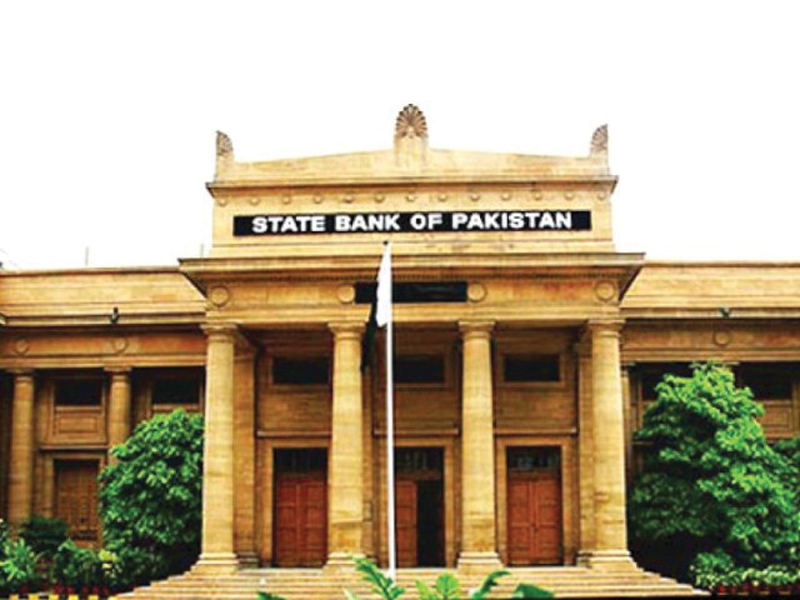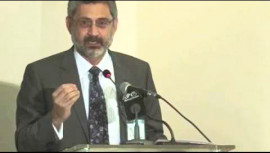
KARACHI: The State Bank of Pakistan (SBP) on Friday increased the key interest rate by 50 basis points to a 67-month high at 10.75 per cent in a bid to put breaks on accelerating inflationary pressure.
The monetary policy committee at the central bank has hiked the rate keeping in view the rising inflationary pressure because of the recovery in the prices of petroleum products and essential food items and the mounting fiscal deficit despite a sharp cut in the Public Sector Development Programme (development budget).
It has also taken into account the rationalisation of tariffs and duties and the narrowing real interest rate as it declined to 1.6 per cent in comparison with the four-year average of 2.85 per cent earlier.
Initial estimates suggest Pakistan is all set to hit a five-year high of 9.1 per cent inflation in March 2019 against 8.2 per cent in the previous month of February.
With the latest increase, the key interest rate has surged by a total of five percentage points since January 2018.
As core inflation stays high, SBP hikes interest rate
Some analysts had commented a day earlier that there was no need to increase the rate. However, Pakistan is set to enter into a long-term loan programme of the International Monetary Fund (IMF), which has set the condition to further increase the rate.
IMF mission chief for Pakistan, Ernesto Ramierz-Rigo, had held a meeting with SBP officials on Wednesday as it was scheduled to announce the key interest rate for the next two months.
The central bank has been increasing the rate under the currency cycle as there was no inflationary pressure on the economy because of the then low international oil and food prices.
The central bank, however, kicked off the journey of increasing the rate to cool down aggregated demand in the overheated economy, as an acceleration in economic growth in FY18 was achieved on the back of higher imports that created a balance of payment deficit and mounted pressure on the country's foreign currency reserves and rupee.
The rupee has depreciated 33.4 per cent to 140.78 against the US dollar in the inter-bank market since December 2017.
State Bank of Pakistan's interest rate decision may catch experts by surprise
"The monetary policy committee noted that sustainable growth and overall macroeconomic stability requires further policy measures as underlying inflationary pressures continue; the fiscal deficit is elevated, and despite an improvement, the current account deficit is still high," the central bank stated in a monetary policy statement.
"Rising input costs on the back of higher energy prices and the lagged impact of exchange rate depreciation are likely to maintain upward pressure on inflation despite a moderation in aggregate demand due to a proactive monetary management," it added.
Core (non-energy and non-food) inflation maintained its 13-month upward trajectory accelerating to 8.8 per cent in February 2019 from 5.2% per cent a year earlier.
Fiscal deficit alarm
The central bank has warned that controlling fiscal deficit would remain a major challenge for economic managers, as it is set to rise above the target. The non-containment of the deficit poses the threat of disrupting the economy.
"The fiscal deficit for the first half (July-December) of the fiscal year 2019 was higher at 2.7 per cent of the GDP when compared with 2.3 per cent for the same period last year," it reported.
In view of the shortfalls in revenue collections and escalating security-related expenditures, it is likely the fiscal deficit in FY19 would move beyond the target.
So far, a significant portion of the fiscal deficit was financed through borrowings from the SBP, "which if continued", the central bank warned, "will not only complicate the transmission of monetary policy but also dilute its impact and prolong the ongoing consolidation efforts".
3.5pc GDP growth
Measures like the key interest rate hike and rupee depreciation to lower aggregate demand in the economy to control twin, fiscal and current account deficits have slowed down real economic growth.
"The real GDP growth is projected to be around 3.5 per cent in FY19," the central bank said.
The country had achieved a 13-year high of 5.8 per cent GDP growth in the previous fiscal year that ended on June 30, 2018. However, the Pakistan Tehreek-e-Insaf government has revised down the FY18 growth rate to 5.2 per cent recently.
Large-scale manufacturing declined by 2.3 per cent during July-Jan FY19 against the 7.2 per cent growth recorded in the same period last year. The latest available estimates of major crops also depict a lackluster performance by the agriculture sector, the central bank noted.
The slowdown in commodity producing sectors has downside implications for growth in services sector as well. Similarly, a deceleration in consumer demand and capital investments, reflected through a cut in development spending and deceleration in credit for fixed investments, indicates a moderation in domestic demand.
However, the current account deficit narrowed to $8.8 billion in July-Feb FY19 against a deficit of $11.4 billion during the same period last year -- a fall of 22.6 per cent owing to stabilisation measures.




















1713418975-0/MehwishKhans-(1)1713418975-0-270x192.webp)


1712071304-0/image-(14)1712071304-0-270x192.webp)























COMMENTS
Comments are moderated and generally will be posted if they are on-topic and not abusive.
For more information, please see our Comments FAQ